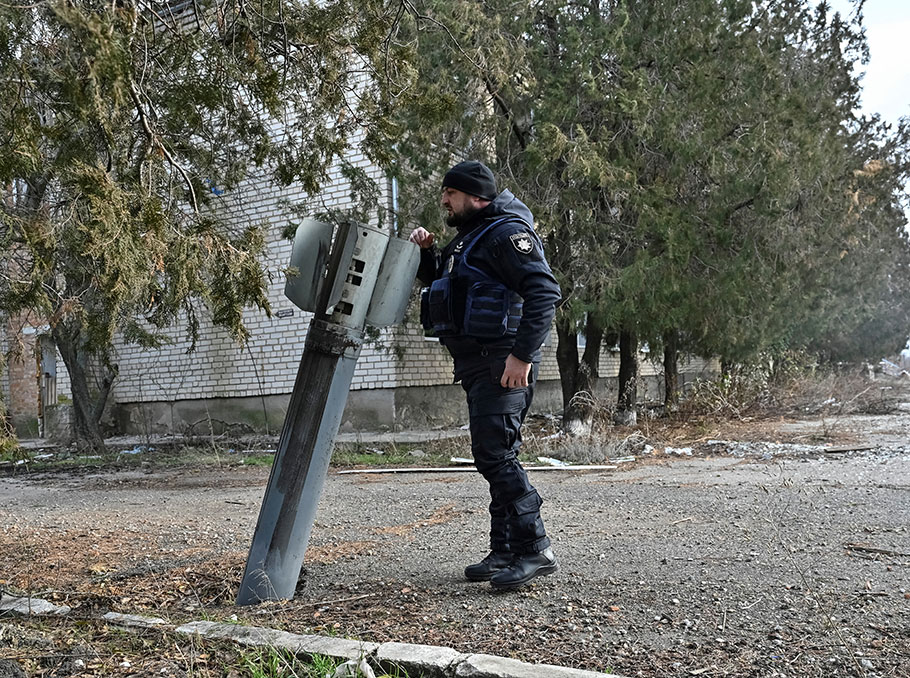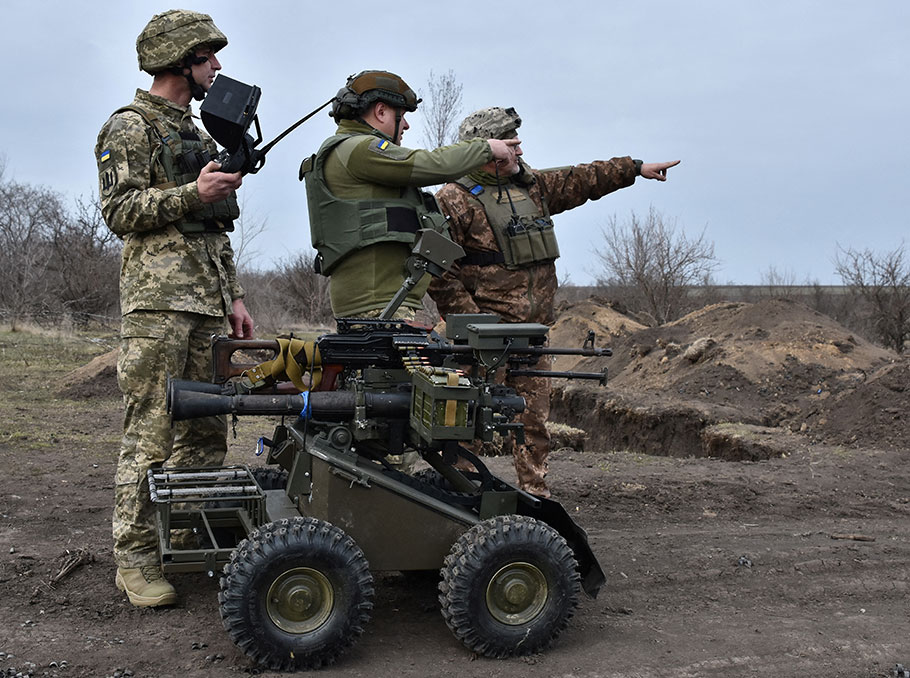By Nicu Popescu and Giorgos Verdi
Nicu Popescu, a former deputy prime minister and minister of foreign affairs of the Republic of Moldova, is a distinguished fellow at the European Council on Foreign Relations. Giorgos Verdi is a policy fellow at the European Council on Foreign Relations.
When we think about the future of warfare, it’s tempting to imagine a world dominated by advanced technologies: AI-powered drones, hypersonic missiles, and satellites coordinating every move. But the war in Ukraine has shown that high-tech capabilities alone don’t win wars. Victory also depends on low-tech solutions – and on rapidly and cheaply integrating the two.
Western powers have long assumed that their technological edge would guarantee victory in any future conflict. The reasoning is simple: if your weapons are smarter, faster, and more precise, you win.
But the Ukraine war has revealed the limits of this thinking. While high-tech systems can be devastatingly effective, they often provide only a temporary strategic advantage. “Stupid” tech – simple, cheap, and widely available – is just as important.
Drones are a prime example. Cruise missiles may be technological marvels, but in Ukraine, it’s swarms of low-cost commercial drones that are making headlines. This was evident in this month’s “Operation Spider’s Web,” in which Ukraine used low-tech first-person view (FPV) drones to destroy Russian aircraft worth billions of dollars.

Photo: REUTERS
Off-the-shelf quadcopters have transformed reconnaissance, targeting, and even direct attacks. Their effectiveness comes not from cutting-edge components but from sheer volume, low cost, and the ingenuity of thousands of innovators who can rapidly scale and modify production. Whenever Russia introduces new countermeasures, new drone variants emerge – a continuous cycle of innovation that keeps them effective.
Drones are far from the only example. Militaries on both sides have also relied on decades-old tanks, second-hand pickup trucks bought online, motorcycles, scooters, and fishing nets stretched over roads to shield against drone attacks – a distinctly low-tech solution known as “anti-drone tunnels.” Wire mesh, barely different from ordinary garden fences, is placed atop tanks to form “cage armor,” designed to protect against anti-tank guided missiles (ATGMs). Even $6 million Leopard tanks still require a makeshift cage, built in Ukrainian garages, to defend against drones that cost barely more.
In this new reality, the most successful militaries are not those with the best equipment but those that adapt quickly to innovations and combine advanced technologies with whatever can be found in large quantities in farmers’ barns, DIY stores, or second-hand auto shops.
Ukraine is a case in point. When Russia began using electronic warfare to jam wireless drones, Ukrainian soldiers responded by attaching them to fiber-optic cables – a low-tech, unglamorous but highly effective workaround.
By adding modest upgrades to existing weapons, militaries have made them far more destructive than their high-tech counterparts. In many battles, these “upcycled” munitions have done more damage than a handful of precision-guided missiles. Glide bombs, for example, are basic “dumb” bombs retrofitted with fins and guidance kits. They may not look futuristic, but they have significantly shifted battlefield dynamics in Russia’s favor.
Similarly, a million low-tech drones can sometimes achieve more than 1,000 high-tech ones, especially when smarter systems are scarce, expensive, and slow to produce. The ability to flood the battlefield with simple, practical tools can overwhelm even the most advanced defenses. A 50-year-old Soviet-era tank or a Toyota pickup that can reach the front in five days is often more useful than a main battle tank equipped with the latest technology that takes two years to deliver.
This is not to suggest that high-tech doesn’t matter or that governments should stop investing in research and development. Against less-capable opponents, cutting-edge weapons can offer a decisive advantage. But when facing a well-matched adversary, success hinges on adaptability, creative thinking, and reliable supply lines.
The West’s challenge, particularly when it comes to rearming Europe, is to rethink what innovation truly means. Rather than merely chasing the most advanced solutions, governments must identify those that can be produced at scale, deployed quickly, and modified on the fly. That requires both adaptability and maintaining large stocks of proven, reliable equipment while developing next-generation systems. Allowing troops on the ground to take the initiative – a hallmark of effective militaries, from the United States to Israel and Ukraine – is equally important.

Photo: REUTERS
With defense budgets across Europe set to increase, it is essential not to rely on past spending patterns. Investment in cutting-edge military equipment must be matched by greater flexibility and faster decision-making. Beyond R&D, governments need acquisition processes that can respond quickly to battlefield innovations.
To this end, European governments should allocate 10-15% of their defense budgets to emerging technologies. That means resisting the urge to pre-allocate every euro and instead embracing the financial flexibility that must accompany creative thinking on and off the battlefield.
In addition to smarter budgeting, procurement processes must be overhauled to allow for faster deployment of new technologies. Western militaries’ traditional, slow-moving systems are not fit for an era when victory can hinge on the pace of adaptation.
European governments should consider establishing alternative contracting processes that significantly shorten procurement timelines. For example, the US Defense Innovation Unit has accelerated procurement from non-traditional vendors by awarding prototype agreements in as little as 60 days, with projects completing in 12-24 months.
Finally, Western militaries must deepen cooperation with tech startups. Much of Ukraine’s resilience can be attributed to hundreds of small companies that have helped its military adapt and produce everything from protective tank cages to battlefield communications systems. Ukraine’s Iron Range testing service – established to help new technologies reach combat readiness – offers a valuable model for accelerating defense innovation.
Western defense establishments should take a page from Ukraine’s playbook and actively engage with private-sector partners to supplement traditional contractors. In a rapidly evolving combat environment, European militaries must replace rigid bureaucratic timelines and inflexible multiyear budgets with more agile systems capable of responding in real time.
Copyright: Project Syndicate, 2025.
www.project-syndicate.org

















Comments
Dear visitors, You can place your opinion on the material using your Facebook account. Please, be polite and follow our simple rules: you are not allowed to make off - topic comments, place advertisements, use abusive and filthy language. The editorial staff reserves the right to moderate and delete comments in case of breach of the rules.